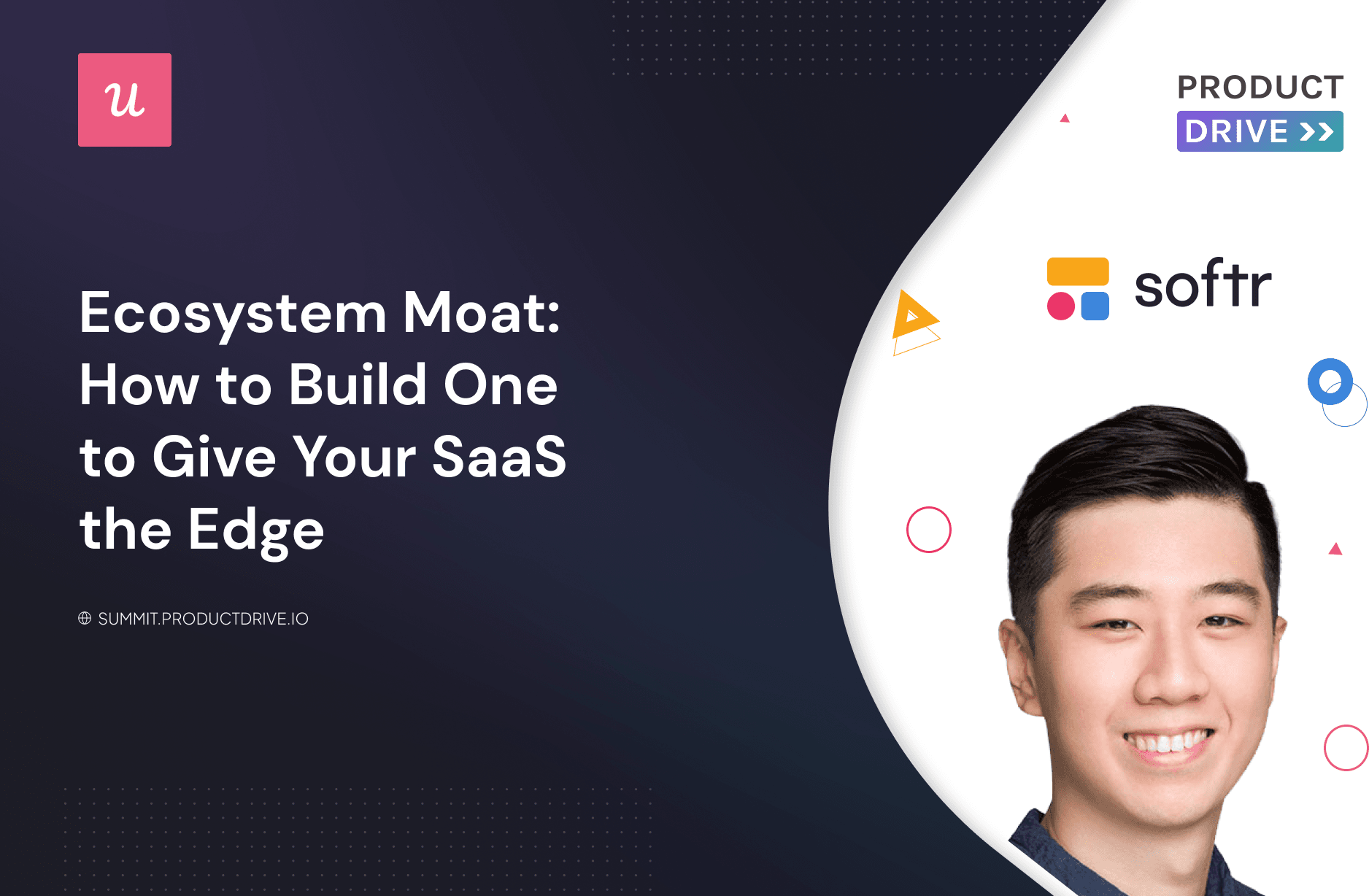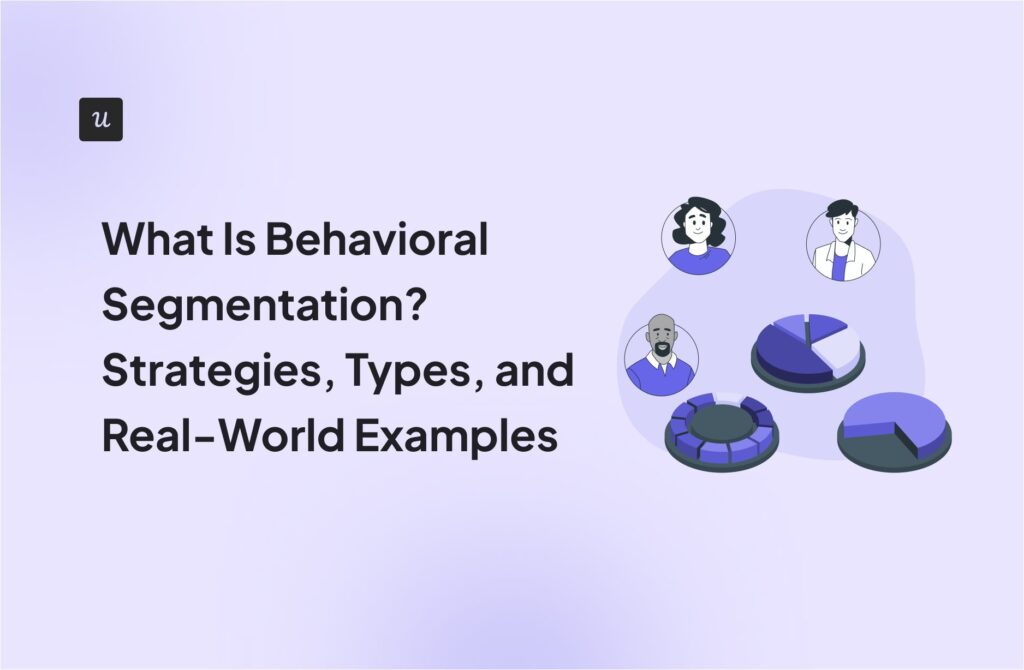
How Today’s Top SaaS Companies Build an Ecosystem Moat by Austin Yang, Product Drive 2022
What is an ecosystem moat and how can product managers build one?
These are the key questions that Austin Yang, the Lead Product Manager at Softr, discussed in his presentation at the Product Drive Summit this year.
Are you intrigued? Well, why don’t we get to it then?
Try Userpilot Now
See Why 1,000+ Teams Choose Userpilot

Overview of an ecosystem moat by Austin Yang
- An ecosystem in SaaS is a group of related apps, 3rd party components, and content that seamlessly work together to solve user pain points.
- Ecosystems allow companies to better satisfy user needs and improve user experience.
- An ecosystem moat is a barrier that protects your product from the competition. It makes it more difficult for other companies to achieve product parity.
- Common levers used to build ecosystems include user-generated templates, experts, and plug-ins.
- Templates allow companies to showcase their products and onboard customers quickly.
- However, no company is able to generate enough templates to cater to unique user needs.
- User-generated templates solve the problem. Motivated users with experience in a particular area can produce better templates than any company could do.
- Agencies bring new customers and help with product implementation. They provide customers services that SaaS companies would struggle to deliver at scale.
- Independent educators help train users in niche applications of the product
- Companies use community leaders to outsource some of the effort needed to manage the ecosystem.
- Plug-ins give endless opportunities to customize SaaS applications to the needs of specific user segments.
- Building a successful ecosystem requires a long-term strategy and vision. Companies need to choose the right combination of levers.
- They also need to create the right system of incentives to motivate users to participate.
- Building an ecosystem requires lots of initial groundwork and time before it catches on. When that happens, the growth is exponential.
- Once the ecosystem starts living its own life, it’s impossible to control what is happening inside. Its management requires planning and resources.
- Leveraging mobile features, you can effectively onboard and engage mobile app users through personalized messaging, push notifications, and surveys.
- Curious to see how Userpilot could help you grow your ecosystem community? Book the demo!
What is an ecosystem in technology?
An ecosystem describes a number of related technological solutions that work together to solve user problems.
In SaaS, an ecosystem could consist of apps working together to satisfy various user needs that they wouldn’t be able to meet on their own.
For example, both Google and Microsoft offer their users a range of different software solutions closely integrated with each other and fulfilling different roles. All of them can access the same resources, like Google Drive or OneDrive storage, and can ‘talk’ to each other.
Why build an ecosystem in SaaS?
In short, a system of integrated apps allows a company to satisfy user pain points, needs and desires better than a stand-alone product. It improves user experience and customer satisfaction.
Many of the most successful SaaS companies like Zapier, Hubspot, Miro, Notion, or Canva are horizontal platforms targeting more than one industry, department, or use case.
While it gives them endless opportunities for account expansion, it is virtually impossible to address the needs of all user segments in those markets.
Finally, a well-developed ecosystem gives companies a competitive edge because of the ecosystem moat.
What is an ecosystem moat?
An ecosystem moat protects a business from its competitors by making it very difficult to copy functionality.
It’s very difficult to compete with other companies on features because they are super easy to emulate.
However, copying a comprehensive ecosystem with a wide range of integrations, plug-ins or content is impossible, especially if it depends on contributions from users.
Needless to say, ecosystem moats are difficult to cross for users who would like to switch to other ecosystems too. This improves retention and customer lifetime value.
Common levers to build an ecosystem
What are the elements that we can build successful ecosystems around?
Let’s look at a few popular components that we could leverage to offer our users a better experience and make our product more competitive.

User-generated templates
Templates deliver incredible value, both for companies and users.
First, they are great to showcase the product functionality with live examples.
What’s more, they are one of the quickest ways to onboard users and reduce the time to value. That’s because they allow users to start using the product from the get-go and experience its value.
Finally, templates make it possible for companies to adapt the product to meet the unique needs of niche users.

However, creating templates is extremely difficult to scale. What’s more, it is virtually impossible for a company to develop templates for every possible use case.
That’s why many companies have given their users a space to create and share their own templates.
It’s not only more cost-effective but takes advantage of user expertise and makes the product more attractive to other users, even if they come from very niche areas.

Want to see some go examples?
Miro
Miroverse is the gold standard when it comes to templates.

During the pandemic, Miro, whose popularity dramatically increased, realized they couldn’t produce enough templates themselves.
As a result, they decided to open up and encourage their power users to create and share their own templates. Many of them, who used Miro for running professional workshops, were more than happy to share their creations because that gave them publicity.
For new Miro users, this flattened the learning curve dramatically, which improved the adoption of the platform.
It was a clear win-win solution, which benefits Miro by making it more attractive for users, and for users by allowing them to achieve their objectives more easily.
Canva
Canva is another SaaS company that harnesses the power of templates to build its ecosystem.

The product allows its users to create quality visuals like banners or background graphics without technical skills, and this is possible thanks to templates.
Just like in Miro, Canva users can create their own templates and share them with other users.
However, the company offers an additional incentive for the contributors. Creators get commissions for the premium artwork that they create.
The premium designs are affordable and normally better quality than the free ones, which increases the customer value, so it benefits the users as well.
Experts
Another lever that companies can pull to build their ecosystems is experts. These could be agencies, educators, and community leaders.

Agencies
Agencies are in other words service providers. They implement your product for other users which makes them very useful partners.
First, they bring customers to your company. Second, you can send your customers to them so that they take care of the implementation of your product for you.
By setting up the products properly for your customers, they contribute to increased retention.

Of course, this means that they get a percentage of the revenue that your product could generate for you. So why not provide the service yourself?
Agencies satisfy lots of other customer needs. Apart from implementation, they advise them on how to operate their business or customize the product through bespoke integrations.
None of these are easily scalable though so SaaS companies don’t want to get into any of that unless they’re targeting enterprise clients.
What’s more, agencies’ networks and expertise in sales allow SaaS businesses to reach customers they otherwise wouldn’t be able to reach.
Hubspot is one well-known company that uses agencies in this way. It’s said 40% may come from agencies that help customers set up and integrate their CRM. For customers, the partners are easy to find through the Hubspot directory.

Educators
Educators create tutorials, courses, or boot camps that teach users how to use your product to get their jobs done.
These could be very product or tool-specific. For example, there is a massive demand for Excel skills and there are plenty of courses dedicated to this software.
Others are skill-specific, for example teaching users no-code app development, and they use different products for this purpose.
How are they different from the resource centers that you build for your users?
They have the potential to be much more user-centered. Such educators speak customers’ language and they are in a better position to teach skills needed for very specific and niche use cases.
The resources developed by SaaS companies, on the other hand, tend to be more generic because they need to cater to a wide range of user personas at once.

Community leaders
Many companies are trying to build communities around their products. However, this is very time-consuming and labor-intensive, because such communities require a lot of human involvement.
That’s why many companies have decided to delegate the work to some of the community members and made them community leaders.
They use a range of incentives and gamification elements like badges to encourage contributions from their loyal users.
Notion’s ambassador program is a good example of harnessing this lever.
It’s a select group of 20 individuals each month who run local Notion events and communities. And they are allowed to use their status to promote and monetize their contributions to the community like templates.

Plug-ins
Plug-ins are their party apps that expand or complement the functionality of SaaS products.
Shopify is a good example of a company using this lever.
Their app marketplace has tons of plugins that allow users to customize the product to their niche use cases. As these use cases are often very unique, it wouldn’t be feasible for Shopify to cater to all of them.
However, the job can be done by other companies or independent developers. By adding custom functionality to Shopify, they make it a more valuable product to the users, and they generate revenue for themselves (Shopify gets a cut). So it’s another win-win situation.

Tips on ecosystem building
Now that we know the possible elements of an ecosystem, let’s look at some good tips that will help you build it and avoid some common pitfalls.
1. Pick the right levers
If you’re wondering which of the three levers is most effective in building robust ecosystems, the answer is not straightforward.
Most successful companies use a combination of them for the best effects.
The key is to choose the ones that are most suitable for the product and the customers.

For example, accounting software will have little use for user-generated templates. However, a network of local accountants using the software and being able to support their customers will be very valuable.
To be able to choose the right levers, you need to understand your market and your users.
2. Understand why people participate in an ecosystem
When building the ecosystem, you need to develop a system of incentives that reflects people’s motivation to participate.
Basically, people want to be a part of an ecosystem for one of three reasons.

Altruism is one. People have the innate desire to help others and are happy to commit their time and energy to that.
Social reasons are the other one. Being a member of a group allows people to improve their social status in certain circles and that’s what motivates them.
Finally, there’s the financial motivation. People want to take part in ecosystems to make money.
3. Build the initial fire
To get the ecosystem going, it needs an initial spark. Except that it’s not really a spark because it’s a very labor-intensive process that’s not very scalable.
For example, it may involve reaching out to potential partners personally and building one-off partnerships.

4. Return will take time
This won’t happen overnight. Sometimes it takes years for the ecosystem to gather enough momentum.

During these years you may not see any traction. However, eventually, perseverance should allow companies to reach the point when things start growing exponentially.
5. Managing an ecosystem is hard
Even when we manage to reach the stage of exponential growth, the hard work doesn’t stop. In fact, it gets harder as new challenges arise.
For example, vetting the plugins or new partners requires a lot of effort.
You can never have complete control over what’s happening in the ecosystem, so you need the right processes and resources to deal with the potential fallout.
For example, you may need to deal with disgruntled customers let down by one of the partners you’ve recommended.

Conclusion
Building an ecosystem around your product allows companies to satisfy the needs of their users better and deliver a more comprehensive and satisfying experience.
An ecosystem moat protects you also against competitors and makes it more difficult for customers to switch to other products.
If you want to see how Userpilot can help you recruit community leaders for your ecosystem, book the demo!





